In the evolving landscape of nutrition science and weight management, certain foods have garnered attention not only for their nutrient density but also for their unique thermogenic and metabolic properties. Among these, there are 2 veggies that destroy stomach fat in ways that are both scientifically backed and impressively effective. As public interest in functional foods intensifies and more individuals seek sustainable approaches to fat loss, especially abdominal fat, the role of these specific vegetables has become a focal point of contemporary dietary discourse. Their mechanisms of action go beyond simple calorie control, targeting hormonal balance, inflammation reduction, and metabolic efficiency. In a world saturated with fad diets and unsubstantiated supplements, these vegetables offer a grounded, evidence-based pathway to better health and body composition.
You may also like: Effortless Fat Loss: The Most Effective At Home Cardio Workout to Burn Fat
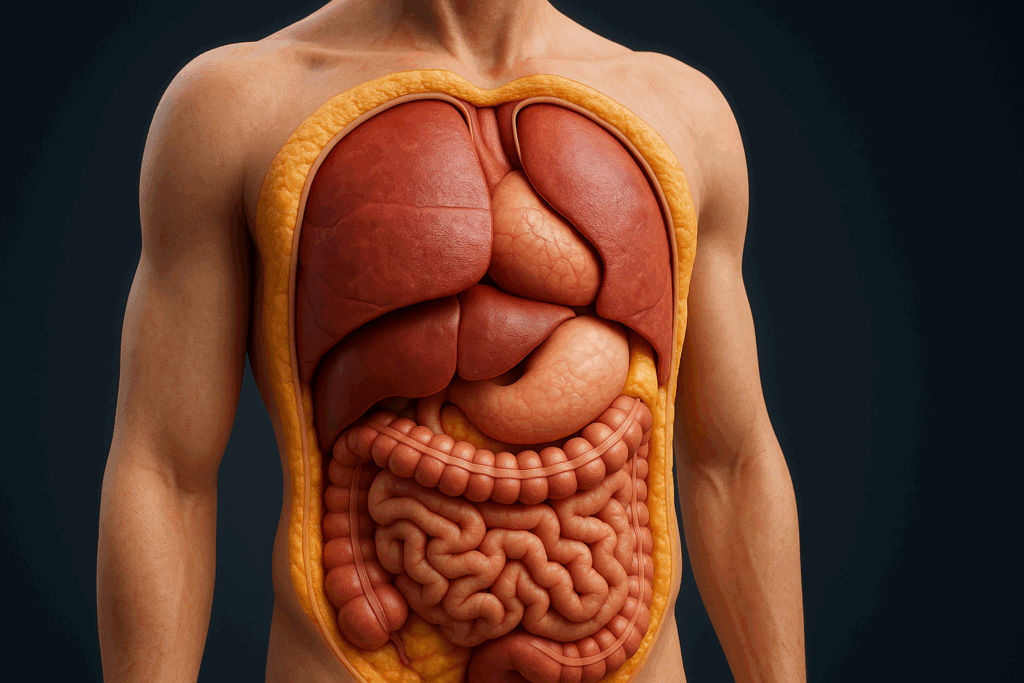
Understanding the Science of Visceral and Subcutaneous Fat
Before delving into the fat-burning potential of specific foods, it’s critical to understand the nature of the fat we aim to lose. Not all body fat is the same. Subcutaneous fat lies just beneath the skin and serves as a buffer and energy reserve. Visceral fat, on the other hand, surrounds internal organs and is strongly associated with metabolic diseases such as type 2 diabetes, cardiovascular disease, and certain cancers. Stomach fat, often used colloquially, typically refers to a combination of these two types, but it is the visceral component that poses the most significant health risk.
Reducing visceral fat requires more than just a caloric deficit. It involves addressing the hormonal and inflammatory pathways that contribute to its accumulation. This is where diet plays a transformative role. Foods that reduce insulin resistance, modulate cortisol levels, and decrease systemic inflammation can directly influence visceral fat reduction, making them the best belly fat burner foods not only for aesthetics but for long-term health. When considering the best foods to eat to burn stomach fat, we must prioritize those that impact these metabolic processes at a cellular level.
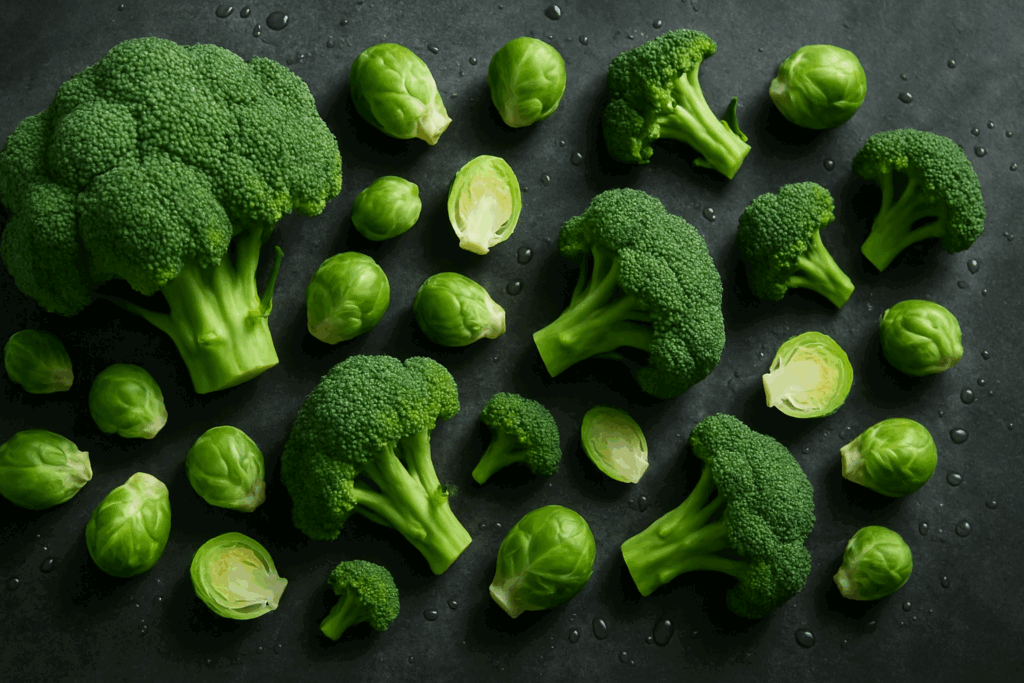
Cruciferous Vegetables: The Cellular Fat-Fighters
Among the pantheon of vegetables available to the health-conscious consumer, cruciferous vegetables stand out for their exceptional nutrient density and fat-burning potential. Broccoli and Brussels sprouts, in particular, have emerged as nutritional powerhouses. Rich in fiber, vitamins C and K, folate, and phytochemicals such as sulforaphane, these vegetables are uniquely suited to combat stomach fat through multiple biochemical pathways.
Sulforaphane, a compound found in abundance in cruciferous vegetables, has been shown in studies to activate enzymes that detoxify the body and reduce inflammation. In animal models, it has been linked to reduced fat mass and improved insulin sensitivity, two key factors in reducing abdominal fat. Moreover, the high fiber content of broccoli and Brussels sprouts promotes satiety, regulates blood sugar, and supports gut health—a critical factor since the gut microbiome plays a significant role in weight management. In effect, these vegetables don’t just fill the stomach with low-calorie bulk; they actively work to change the internal environment in a way that promotes fat loss, making them the best tummy fat burning foods for a science-informed lifestyle.
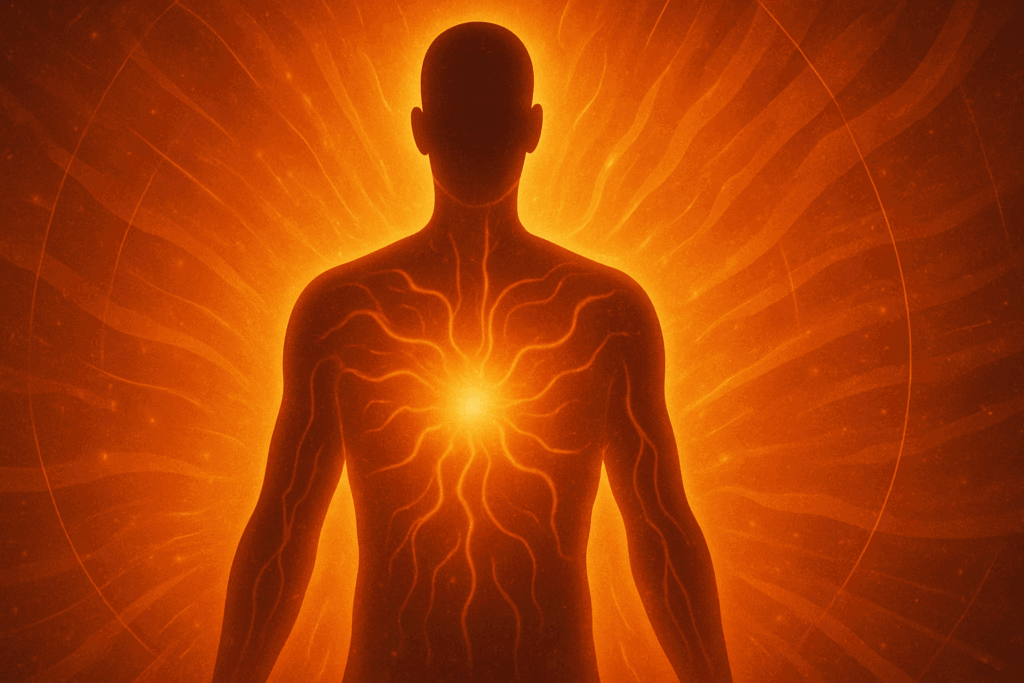
Metabolic Thermogenesis and Dietary Activation
Another dimension through which these 2 veggies that destroy stomach fat operate is thermogenesis—the process by which the body burns calories to produce heat. While protein is often lauded for its thermogenic effect, certain vegetables also contribute to this process, albeit through different mechanisms. Broccoli and Brussels sprouts, for example, increase the body’s energy expenditure indirectly by enhancing insulin sensitivity and reducing lipogenesis, the process of creating new fat.
This is not to suggest that eating a serving of broccoli will instantly burn fat, but when these vegetables are incorporated consistently into a balanced, hypocaloric diet, their contribution to a higher metabolic rate becomes significant. They work best when paired with physical activity and sufficient protein intake, both of which amplify the body’s calorie-burning capacity. Their role in reducing oxidative stress and improving mitochondrial function further elevates their status as best belly fat burner foods for individuals serious about long-term health transformations.
Targeting Inflammation: A Hidden Driver of Fat Accumulation
Chronic inflammation is often overlooked in conventional fat-loss discussions, yet it plays a pivotal role in the development and persistence of abdominal fat. Pro-inflammatory cytokines such as TNF-alpha and IL-6 disrupt normal metabolic signaling, promoting fat storage and inhibiting fat oxidation. Cruciferous vegetables possess potent anti-inflammatory properties that directly counteract these biochemical disturbances.
Broccoli and Brussels sprouts contain glucosinolates, which are converted in the body to isothiocyanates—compounds known for their inflammation-fighting abilities. These phytochemicals work at the genetic level to suppress pro-inflammatory gene expression while enhancing antioxidant defenses. Inflammation reduction not only aids in fat loss but also improves energy levels, mental clarity, and exercise recovery, all of which contribute to a more consistent and effective fitness regimen. By mitigating inflammation, these vegetables help reverse the metabolic conditions that favor abdominal fat retention, solidifying their place among the best foods to eat to burn stomach fat.
Hormonal Balance and Appetite Regulation
Another often underestimated factor in fat loss is the regulation of hormones involved in hunger and satiety. Ghrelin, the “hunger hormone,” and leptin, the “satiety hormone,” are influenced not only by caloric intake but also by nutrient composition. High-fiber vegetables such as broccoli and Brussels sprouts slow gastric emptying and extend the feeling of fullness after a meal. This contributes to a natural reduction in overall caloric intake without the need for willpower-driven restriction.
Furthermore, these vegetables support adrenal health and modulate cortisol, the stress hormone associated with belly fat accumulation. Chronic stress elevates cortisol levels, which in turn increase visceral fat storage. By providing a nutrient-dense, anti-inflammatory dietary base, cruciferous vegetables help balance these hormones, supporting a more favorable environment for fat metabolism. This hormonal recalibration is one of the more subtle yet profound ways that 2 veggies that destroy stomach fat exert their influence.

The Role of Gut Microbiota in Fat Storage
Emerging research has revealed a fascinating connection between the gut microbiome and body composition. An imbalance in gut flora—a condition known as dysbiosis—can lead to increased fat storage, insulin resistance, and systemic inflammation. The good news is that diet has a powerful and direct effect on the composition of gut bacteria.
Broccoli and Brussels sprouts are prebiotic-rich vegetables that feed beneficial gut bacteria such as Bifidobacteria and Lactobacillus. These bacteria produce short-chain fatty acids (SCFAs) like butyrate, which improve gut barrier function, regulate immune response, and enhance insulin sensitivity. A healthy gut ecosystem translates to a more efficient metabolism and reduced fat accumulation, particularly in the abdominal area. By supporting gut health, these vegetables double as functional tools for managing both weight and digestive well-being, reinforcing their status as best tummy fat burning foods from both a nutritional and microbial perspective.
Integrating Fat-Burning Veggies into a Comprehensive Nutrition Plan
The effectiveness of any food, no matter how potent, is limited when consumed in isolation or without context. True transformation occurs when these ingredients are incorporated into a larger framework of strategic eating. A comprehensive nutrition plan that includes lean proteins, healthy fats, and low-glycemic carbohydrates will amplify the benefits of broccoli and Brussels sprouts.
For example, pairing these vegetables with omega-3 rich salmon not only increases satiety but also introduces additional anti-inflammatory agents into the diet. Including a variety of fibrous vegetables ensures a diverse intake of micronutrients and phytochemicals, each contributing its unique effects to the fat-burning process. Timing also matters. Consuming high-fiber vegetables earlier in the day can regulate appetite and blood sugar throughout, reducing the likelihood of overeating later. In this way, the best foods to eat to burn stomach fat are not standalone solutions but components of a synergistic strategy that honors the complexity of human metabolism.
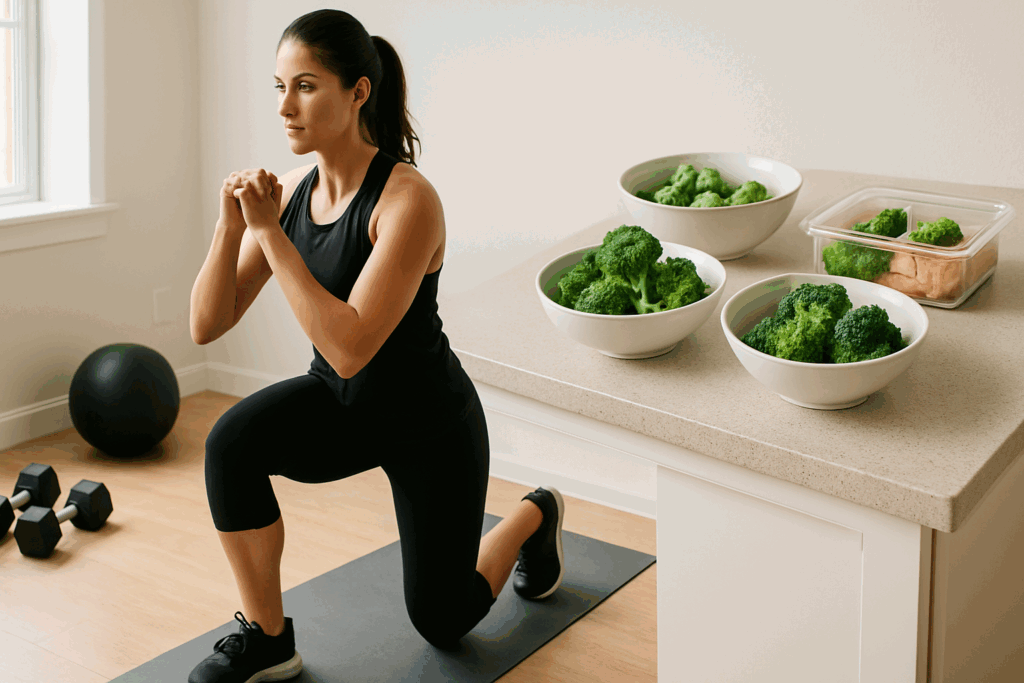
The Synergy of Exercise and Vegetable-Enhanced Fat Loss
No discussion of fat loss would be complete without addressing the role of physical activity. Exercise enhances insulin sensitivity, increases energy expenditure, and stimulates lipolysis, all of which contribute to the reduction of abdominal fat. When paired with a diet rich in cruciferous vegetables, these benefits are magnified. The antioxidants and anti-inflammatory compounds in broccoli and Brussels sprouts support faster recovery and reduce exercise-induced oxidative stress.
This means you can train more frequently and with greater intensity, thereby expending more calories and accelerating fat loss. Moreover, these vegetables provide essential nutrients like calcium and magnesium, which are vital for muscle contraction, nerve signaling, and energy production. For individuals engaging in strength training or high-intensity interval training (HIIT), these nutrients are particularly important. The best belly fat burner foods do not just reduce fat in isolation; they support the body systems that enable more effective workouts and quicker recovery, creating a virtuous cycle of health and performance.
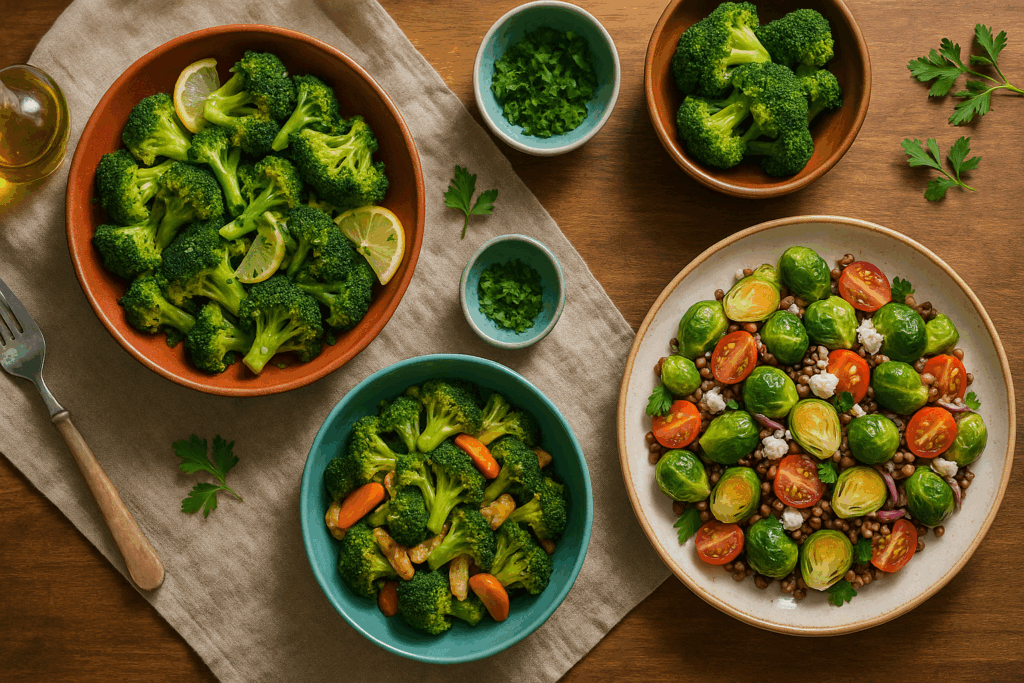
Cultural and Culinary Flexibility of Fat-Burning Veggies
Another often-overlooked benefit of the 2 veggies that destroy stomach fat is their culinary adaptability. Both broccoli and Brussels sprouts can be prepared in myriad ways, allowing for consistent consumption without palate fatigue. Roasting with olive oil and herbs enhances their natural flavors while preserving nutrient content. Stir-frying with garlic and ginger provides a quick, savory meal that aligns with anti-inflammatory dietary goals.
These vegetables can also be incorporated into soups, omelets, and grain bowls, ensuring that they remain a staple of daily eating habits. Their low caloric density and high water content make them ideal for volume eating—a strategy that allows for larger portions without a corresponding increase in caloric intake. This approach is particularly useful for individuals transitioning from calorie-dense processed foods to more nutrient-dense, whole-food diets. By making fat-burning vegetables both accessible and enjoyable, we increase the likelihood of sustained dietary adherence, which is the cornerstone of any successful fat-loss strategy.
Dispelling Myths About “Negative-Calorie” Foods
A common myth in the world of weight loss is the concept of “negative-calorie” foods—the idea that certain foods require more energy to digest than they provide. While it’s true that high-fiber vegetables like broccoli and Brussels sprouts have a low caloric impact, the notion that they somehow create a calorie deficit simply through digestion is not supported by science. Instead, their fat-burning power lies in their ability to influence satiety, hormonal balance, insulin sensitivity, and inflammation.
Understanding this distinction is crucial for setting realistic expectations. No single food will melt away fat, but consistent choices made over time will reshape the metabolic landscape of the body. It is in this context that we appreciate the genuine, evidence-based value of the best tummy fat burning foods. By focusing on their scientifically validated mechanisms, rather than myths and marketing gimmicks, we empower individuals to make informed dietary choices that yield lasting results.
Public Health Implications and Preventive Medicine
The prevalence of obesity and its related metabolic disorders has reached epidemic proportions globally. Public health strategies increasingly emphasize dietary education and preventive nutrition as primary interventions. In this context, promoting the consumption of nutrient-dense, fat-burning vegetables like broccoli and Brussels sprouts becomes a practical and scalable solution.
These vegetables are widely available, affordable, and culturally neutral, making them suitable for diverse populations. Their integration into school meal programs, workplace cafeterias, and public nutrition campaigns could play a significant role in reducing the incidence of diet-related diseases. From a policy perspective, supporting agricultural practices that prioritize these vegetables and providing subsidies for their production could further enhance accessibility. When we view the best belly fat burner foods through the lens of public health, their importance transcends individual weight loss goals and enters the realm of societal well-being.
A Word on Sustainability and Environmental Impact
In an era of increasing ecological awareness, it is important to consider the environmental footprint of our dietary choices. Fortunately, cruciferous vegetables are among the more sustainable crops to cultivate, requiring less water and land than animal-based sources of nutrition. They also contribute to soil health through crop rotation and have a relatively low carbon footprint compared to resource-intensive food products.
This alignment between personal health and planetary health is not incidental. It reflects a deeper understanding of the interconnectedness between human well-being and environmental stewardship. Choosing the best foods to eat to burn stomach fat, particularly when those foods are plant-based and sustainably produced, becomes an act of ecological mindfulness as well as nutritional wisdom. In this way, dietary decisions can serve dual purposes: optimizing body composition while contributing to a more sustainable food system.
Frequently Asked Questions: The Surprising Fat-Burning Power of 2 Veggies That Destroy Stomach Fat
How do the 2 veggies that destroy stomach fat actually work on a metabolic level?
The two vegetables known to aid in stomach fat reduction typically work through their impact on metabolism, particularly by influencing thermogenesis and hormone regulation. These vegetables are often rich in compounds such as glucosinolates, chlorophyll, and dietary nitrates, which activate brown adipose tissue and promote fat oxidation. By enhancing insulin sensitivity and reducing systemic inflammation, they help control the hormonal triggers behind abdominal fat storage. Additionally, their high fiber content not only increases satiety but also supports gut microbiota diversity, which has been linked to improved metabolic health and weight management. Incorporating these into meals consistently can help create a metabolic environment conducive to sustained fat loss without extreme calorie restriction.
Can the 2 veggies that destroy stomach fat be eaten raw, or do they require cooking for effectiveness?
Interestingly, both raw and cooked forms of these vegetables offer distinct metabolic advantages. When eaten raw, these veggies retain certain enzymes and water-soluble nutrients that may contribute to digestion and detoxification processes. On the other hand, cooking can enhance the bioavailability of some fat-burning phytochemicals, such as indole-3-carbinol or luteolin, by breaking down plant cell walls. Light steaming, in particular, strikes a balance by preserving delicate antioxidants while improving nutrient absorption. From a practical standpoint, rotating between raw salads and lightly cooked dishes ensures that you benefit from the full nutritional spectrum these powerful vegetables have to offer.
Are these two vegetables effective for targeting visceral fat specifically?
Yes, there is emerging evidence that the two veggies that destroy stomach fat may be particularly effective at reducing visceral fat, which surrounds the organs and poses serious health risks. Their unique composition supports hormonal regulation, especially related to cortisol and insulin, two hormones that directly influence visceral fat accumulation. Moreover, these vegetables may help suppress genes involved in adipogenesis, the formation of new fat cells. Consistent intake can also enhance mitochondrial activity in abdominal adipocytes, helping the body become more efficient at using stored fat as energy. This effect, while subtle on a day-to-day basis, adds up over time to yield measurable reductions in harmful fat stores.
What’s the best time of day to eat the best belly fat burner foods, including these vegetables?
Timing can play a subtle yet meaningful role in maximizing the fat-burning potential of certain foods. Including the best belly fat burner foods during the first half of the day may help stabilize blood sugar and enhance metabolic performance throughout active hours. For example, adding these fat-targeting vegetables to a protein-rich breakfast or lunch can promote satiety and improve insulin efficiency during periods of peak activity. Evening consumption also has merit, especially when paired with lean proteins and slow-digesting carbohydrates, as it may aid overnight fat oxidation and reduce next-day cravings. Ultimately, consistency in intake is more important than exact timing, but pairing timing strategies with nutrient-rich meals can offer an extra edge.
How do these vegetables compare to other best tummy fat burning foods in terms of nutritional density?
Compared to more widely promoted fat-burning foods such as grapefruit, avocado, or green tea, these vegetables offer a more comprehensive blend of fiber, micronutrients, and phytochemicals specifically associated with abdominal fat reduction. They are particularly rich in vitamins K, A, and C, along with folate and minerals like magnesium, which support cellular metabolism and muscle function. Unlike some trendy fat-loss foods, they have an exceptionally low glycemic load, meaning they don’t spike blood sugar and are suitable for individuals with insulin sensitivity. Furthermore, their sulfur-containing compounds can enhance detoxification pathways, which indirectly support fat metabolism by reducing oxidative stress. Their synergistic benefits make them a cornerstone among the best tummy fat burning foods.
Is there a psychological advantage to eating the best foods to eat to burn stomach fat consistently?
Absolutely. Developing a routine that incorporates the best foods to eat to burn stomach fat can improve mental discipline and body image, which are often overlooked aspects of long-term weight management. When individuals observe small but steady progress, it reinforces positive habits and creates a feedback loop of motivation and self-efficacy. Additionally, nutrient-dense vegetables help modulate neurotransmitters such as dopamine and serotonin by supporting gut health, which is directly connected to mood and emotional resilience. Feeling fuller and more energetic can also reduce stress eating and emotional food cravings. Over time, this psychological shift supports a lifestyle change rather than a temporary diet.
Can athletes or bodybuilders benefit from including these vegetables in their cutting phase?
Yes, athletes and bodybuilders in a cutting phase can derive multiple benefits from incorporating these vegetables into their diets. Due to their low calorie and high nutrient profile, they help maintain micronutrient intake while facilitating a caloric deficit. The anti-inflammatory and antioxidant properties of these vegetables also aid in faster recovery, reduce muscle soreness, and support joint health. Their fiber content can help with appetite regulation, which becomes critical during phases of reduced caloric intake. Finally, these vegetables contribute to lean muscle preservation by enhancing insulin sensitivity and mitochondrial efficiency—both crucial during body recomposition.
How do the 2 veggies that destroy stomach fat support gut health?
A lesser-discussed but critical aspect of fat loss is the role of gut health, and these two vegetables contribute significantly in this area. They are rich in prebiotic fibers that nourish beneficial gut bacteria, including Bifidobacteria and Lactobacillus species, which have been associated with lower body fat percentages. By improving gut barrier integrity and reducing endotoxemia (toxins entering the bloodstream from the gut), these vegetables support a healthier inflammatory profile. A balanced microbiome also leads to more effective energy harvesting from food, which helps regulate hunger hormones like ghrelin and leptin. This improved signaling can reduce binge-eating tendencies and enhance long-term dietary adherence, making these vegetables a gut-smart choice for fat loss.
Are there any emerging trends in food science that may enhance the fat-burning effects of these vegetables?
Indeed, food science is exploring ways to enhance the bioavailability and synergistic effects of fat-burning vegetables. One innovation involves pairing them with certain spices like turmeric or black pepper, which can amplify their anti-inflammatory and thermogenic properties. Another trend is fermenting these vegetables, which not only boosts their probiotic value but also increases the availability of key micronutrients. Researchers are also examining the role of personalized nutrition—using genetic or microbiome data to determine which individuals respond most favorably to specific vegetables. Advances in functional food formulations, such as vegetable-based smoothies or supplements, may make it easier for consumers to integrate these superfoods into their routines without relying on traditional cooking methods.
How can people make the best belly fat burner foods more appealing in daily meals?
Making the best belly fat burner foods more enticing often comes down to creative preparation and flavor pairings. Roasting these vegetables with healthy fats like avocado oil can bring out their natural sweetness and enhance texture. Incorporating them into global cuisine—such as adding them to stir-fries, stews, or Mediterranean-style salads—adds variety and cultural richness to meals. Adding acidic components like lemon juice or apple cider vinegar can help balance bitterness while aiding digestion. For those with busy schedules, prepping in bulk and using them as the base for grain bowls or wraps can streamline healthy eating. Making these veggies visually appealing through vibrant garnishes and plating also boosts meal satisfaction, increasing the likelihood of consistent consumption.
Conclusion: Why the 2 Veggies That Destroy Stomach Fat Belong in Your Daily Diet
The journey toward sustainable fat loss is often clouded by misinformation, fleeting diet trends, and unrealistic promises. Yet within the realm of scientific research and nutritional evidence lies a clear, actionable path. The 2 veggies that destroy stomach fat—broccoli and Brussels sprouts—stand as paragons of this path, offering a multidimensional approach to weight management that includes hormonal regulation, inflammation control, appetite suppression, gut microbiome support, and metabolic enhancement. They are, without exaggeration, among the best tummy fat burning foods available to those seeking health not just in appearance but in function.
Incorporating these vegetables into your daily diet is more than a tactical move for fat loss. It is a strategic, evidence-based investment in your long-term health, vitality, and metabolic resilience. When paired with consistent physical activity, stress management, and a balanced macronutrient intake, their impact becomes even more profound. They prove that the best belly fat burner foods need not be exotic, expensive, or difficult to find. They may, in fact, be waiting for you in the produce aisle—modest in appearance but powerful in their effects. Let them be a cornerstone of your nutritional strategy, a daily reminder that simplicity, science, and consistency are the true keys to transformative wellness.
Further Reading:
Discover What Are The 2 Vegetables That Destroy Stomach Fat





